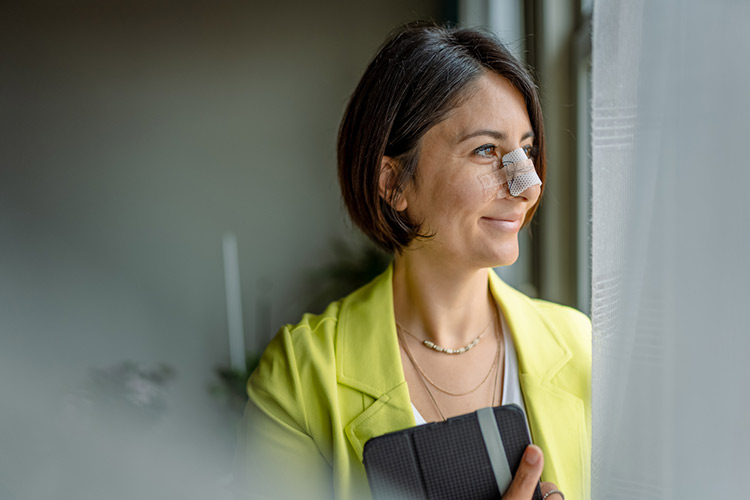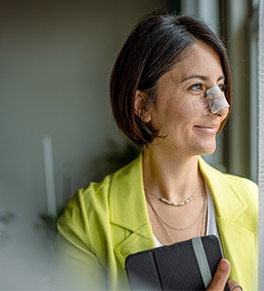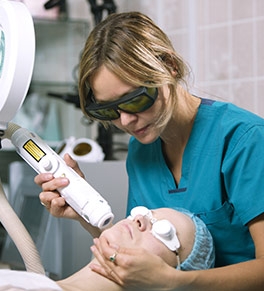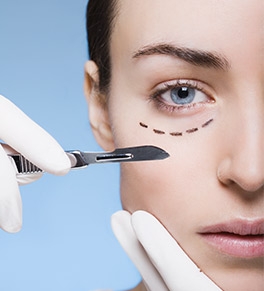
Are you considering a rhinoplasty? While you know you’re in good hands during surgery in our state-of-the-art, fully accredited surgery center with Dr. Cecil Yeung and a team of anesthesiologists and nurses, you might wonder what happens after your surgery. How long and difficult is the recovery?
While every patient is different, here's a closer look at what you can generally expect after your nose job at The Yeung Institute in Houston, Texas.
What to expect immediately after surgery
Our team provides all of your care under one roof — from plastic surgery consultations to your surgical procedure. Following surgery, you spend time in our recovery area.
As you emerge from anesthesia, it’s normal to feel a little groggy or even a little nauseous. While both of these symptoms are normal and to be expected, we monitor you carefully.
Right after your rhinoplasty, you may experience:
Swelling, bruising, and discomfort
Swelling and bruising around your eyes and nose are common. Cold compresses help reduce swelling, and Dr. Yeung may prescribe medication to manage pain.
Nasal packing
In some cases, we place nasal packing or splints inside your nose to support the new structure. We remove these during a follow-up appointment.
Breathing difficulties
Breathing through your nose may be challenging initially due to swelling and congestion, so it’s normal to switch to breathing through your mouth at this stage.
What to expect as you head home after rhinoplasty
After your initial recovery in our private surgery center, we discharge you for the remainder of your recovery at home or, in the case of international patients, in your hotel room. Our staff is happy to answer all of your questions regarding transportation and accommodations.
Managing swelling and bruising
Swelling and bruising typically peak within 48 hours and then gradually subside. You can help reduce these side effects by:
- Applying cold compresses
- Sleeping with your head elevated with pillows to reduce swelling and promote drainage
- Avoiding rigorous physical activities that could increase blood flow to your face
If you have any questions about pain and swelling post-op, don’t hesitate to reach out to our team.
Caring for your nose
Proper care of your nose is crucial during rhinoplasty recovery. Dr. Yeung provides instructions on how to clean your nose and nostrils gently to prevent infection.
Be extremely cautious not to bump or touch your nose, as it's fragile during the healing process. As with any surgical procedure that includes an incision, protect your nose from direct sunlight to prevent pigmentation changes at the surgical site.
Focusing on a healing diet and medications
Dr. Yeung prescribes medications and may recommend a specific diet to follow during your recovery. It's essential to stay hydrated. Drinking plenty of fluids can aid in healing, help regulate your body temperature, aid in cell growth, and flush waste from your body.
For your first few weeks after surgery, you may focus on soft, easy-to-eat foods, such as oatmeal, scrambled eggs, yogurt, mashed potatoes, green smoothies, soups, and porridge.
Also be sure to take prescribed medications as directed for pain management and infection prevention.
Returning to your activities gradually
You can typically return to work or school within a week, but avoid strenuous activities for several weeks. It's essential to avoid smoking and alcohol, as both can impede the healing process.
As you ease back into your daily routine, protect your nose. Wear glasses carefully and avoid excessive facial movements.
What to expect in the long term after rhinoplasty
Full recovery and the final results of a rhinoplasty may take several months. Give yourself grace as you heal, and be patient. Your new nose continues to refine over time.
Regular follow-up appointments with Dr. Yeung is an important part of your recovery.
Do you have more questions? To schedule your in-depth consultation, call 713-795-4885. You can also use our online form to request an appointment.








